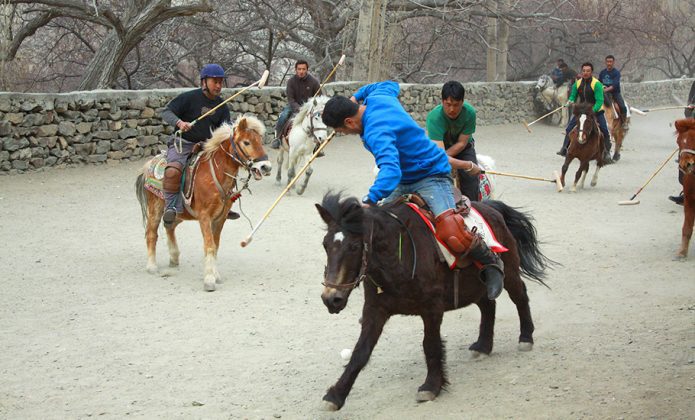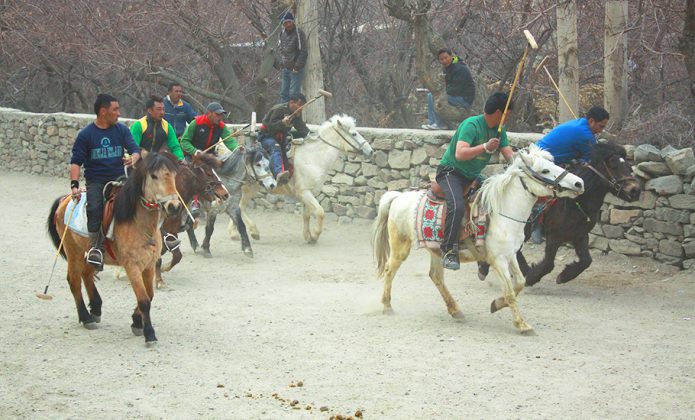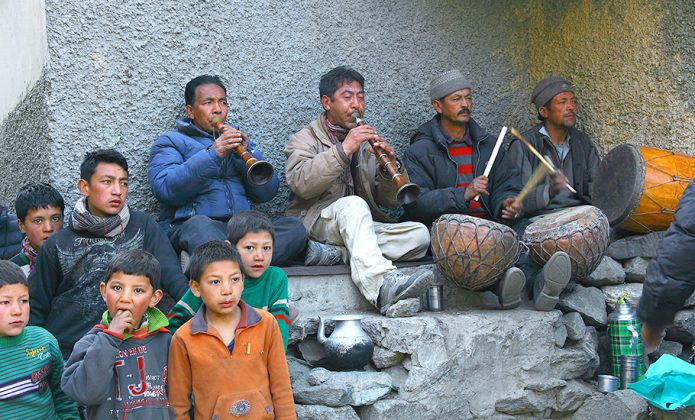
- Home
- News
- Analysis
- States
- Perspective
- Videos
- Education
- Entertainment
- Elections
- World Cup 2023
- Features
- Health
- Business
- Series
- Economy Series
- Earth Day
- Kashmir’s Frozen Turbulence
- India@75
- The legend of Ramjanmabhoomi
- Liberalisation@30
- How to tame a dragon
- Celebrating biodiversity
- Farm Matters
- 50 days of solitude
- Bringing Migrants Home
- Budget 2020
- Jharkhand Votes
- The Federal Investigates
- The Federal Impact
- Vanishing Sand
- Gandhi @ 150
- Andhra Today
- Field report
- Operation Gulmarg
- Pandemic @1 Mn in India
- The Federal Year-End
- The Zero Year
- Premium
- Science
- Brand studio
- Home
- NewsNews
- Analysis
- StatesStates
- PerspectivePerspective
- VideosVideos
- Entertainment
- ElectionsElections
- Sports
- Loading...
Sports - Features
- BusinessBusiness
- Premium
- Loading...
Premium
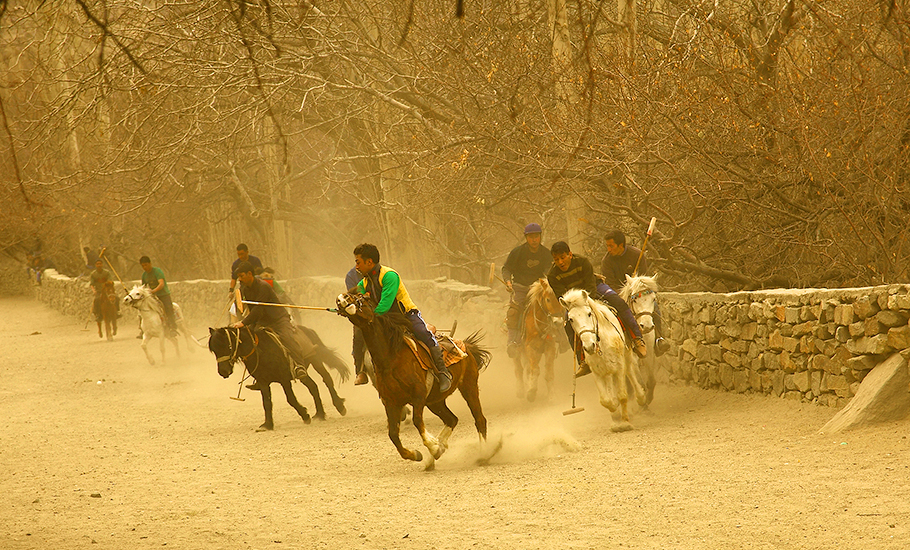
Vignettes of polo from Turtuk, the far-end of Ladakh

This is a memory so vivid as if it had all happened just moments ago. It was March 21, 2014 – a day of particular interest to a vast majority of people not just in India but also in neighbouring Pakistan. The two countries, madly infatuated with cricket but famously notorious rivals both on and off the pitch, were set to face off against each other in the ICC T20 World Cup opener. On that...
This is a memory so vivid as if it had all happened just moments ago. It was March 21, 2014 – a day of particular interest to a vast majority of people not just in India but also in neighbouring Pakistan. The two countries, madly infatuated with cricket but famously notorious rivals both on and off the pitch, were set to face off against each other in the ICC T20 World Cup opener.
On that day, I, along with some friends, was in Turtuk, a tiny hamlet just about 10 kilometres from Thang, India’s northernmost village at the corner of Ladakh, beyond which lies the Pakistan administered region of Gilgit-Baltistan. And yet, not one local resident in Turtuk seemed the least bit excited about this sporting clash, which to many in the subcontinent, comes a close second to an actual war between the two countries.
The residents of Youl and Farol – the two villages separated by a suspension bridge over a gushing stream that collectively form Turtuk – had pushed the Gentleman’s Game out of their consciousness. Their singular focus, as if through a hive mind, was on what the locals hail as the ‘Game of Kings and King of Games’ – polo.
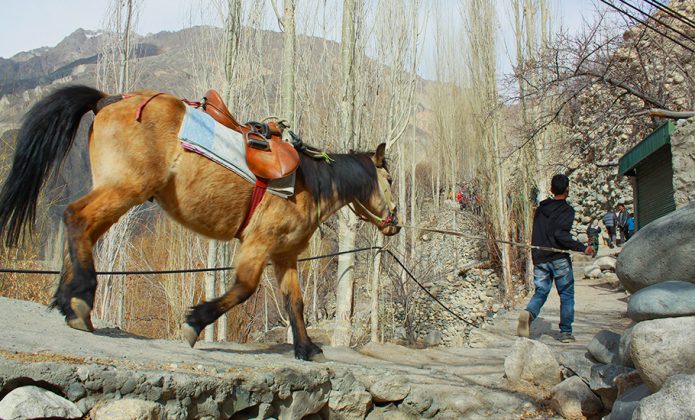
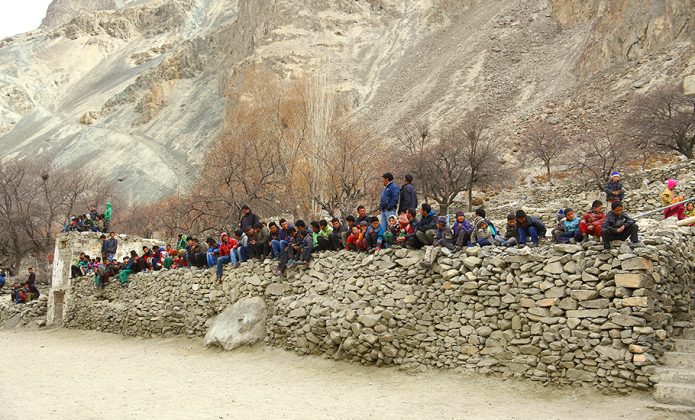
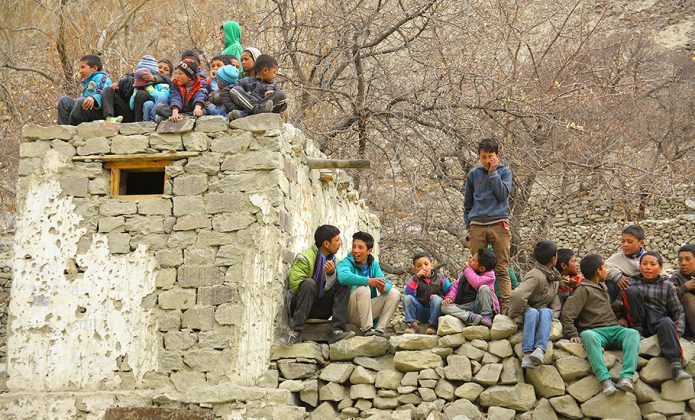
Polo? In Ladakh – that vast Tethyan lithosphere replete with striking ophiolites and seemingly infinite stretches of barren land, interspersed with visibly distant patches of soaring poplar trees and some shrubbery that are just enough to barely aerate this region infamous for its depleted oxygen? But then, in Turtuk, plush with its sprawling buckwheat fields and countless fruits (mostly apricot but also apple, cherry, peach and walnut) trees, the stereotypical image of Ladakh’s cold desert simply vanishes.
Turtuk is situated at the far end of Ladakh, a six-hour drive from Leh via the erroneously acclaimed ‘world’s highest motorable mountain pass’ of Khardung La and beyond the seemingly interminable sand dunes of Hunder, in a remote corner of the Nubra Valley. Though a small village with a population of just around 2,500 residents – all of them Muslims from the Noorbakshi Shia denomination; a major departure in ethnicity from the otherwise predominantly Buddhist Ladakh – Turtuk has a history – recent and of the centuries past – that is as unique as its fascinating culture and traditions.
For over two decades after India’s Partition in 1947, Turtuk was part of the larger Pakistan administered Gilgit-Baltistan region. Then one fateful day in December of 1971, almost overnight, the residents of Turtuk got a new nationality, without moving an inch from the place of their residence.
The Indian Army, which had been engaged in war with Pakistan in a region that was to soon be carved out as the separate nation of Bangladesh, had also stealthily led a small but significant advance along the Pakistan-administered Northern Areas in Kashmir. Four villages of Baltistan were ‘reclaimed’ by the Indian Army between December 8 and December 14, 1971 – Turtuk was one of them, the others being Chalunkha, Takshi and Thang.
The swift Indian Army victory also extracted a heavy personal price from natives of these four villages. Many families were torn apart because some members of the household had gone to nearby Skardu (still in Baltistan, it was the only major market in the region then), before the Indian Army made its advance and could never return home because they were Pakistanis while their relatives back in Turtuk, Chalunkha, Takshi and Thang had suddenly become Indians and a border now stood between them.
For nearly four subsequent decades, Turtuk was largely unknown to those outside Ladakh. Tourist entry was banned in Turtuk by the government till as recently as 2010 due to its militarily sensitive and strategic location in close proximity to Pakistan. Thus, it is only in the past decade that this hamlet began to slowly reveal itself to the rest of the world. Turtuk’s love for polo is just one of these revelations.
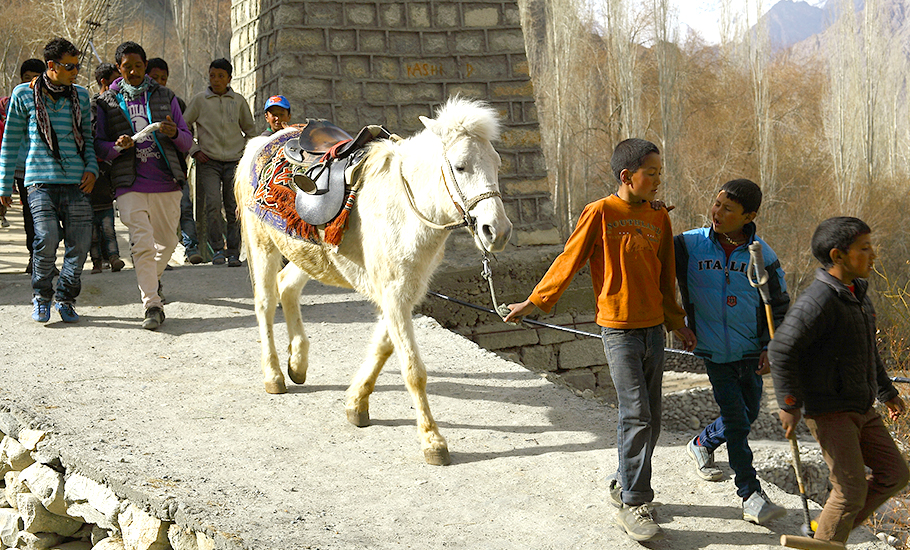
Each year, on March 21, the first day of the Balti New Year called Navroz, the best polo players of Turtuk Youl and Turtuk Farol gather for a match at their polo ground situated at an altitude of over 9300 feet. This contest may yet not be as well-known as the world-renowned three-day polo Tournament at neighbouring Baltistan’s Shandur Top played between the best teams of Gilgit and Chitral but it is gradually gaining attention.
Last year, the Ladakh Autonomous Hill Development Council (LAHDC) organised its first Nubra Sports and Adventure Festival at Turtuk, of which polo matches were the main highlight. The Nubra Sports and Adventure Festival was held in October, not the usual time for Polo in Turtuk. Residents of the village maintain that though the LAHDC’s initiative has brought much public interest to their association with the game, the real deal still remains the match played annually on March 21.
For Turtuk natives, polo is as much about preserving their century-old links to Baltistan as it is about their own history. Though polo traces its origins to 6th Century Persia (modern day Iran), the dominant belief in Turtuk is that the game was first played all across Baltistan and that it even got its name from the Balti language – a dialect of Tibetan. Pulu in Balti means ‘ball’.
The preparations for the March 21 match between teams from Youl and Farol begin months before Navroz. Polo ponies (aged between 1 and 3 years) are purchased around December-January from Ladakh’s Zanskar and Changthang regions. The price of the ponies, back in 2014, ranged from Rs 20,000 to Rs 30,000.
The ponies are then brought to Turtuk where players train them for polo over the next three months. The ponies are fed a diet of buckwheat, wheat and lentils – all grown across Turtuk, breaking yet another stereotype of the entire region of Ladakh being a barren territory – soaked in water for five weeks to help the horses gain stamina. Once trained, a polo pony may fetch up to Rs 60,000 though players rarely agree to sell.
The size of the polo teams differs from one match to the other but there’s always a minimum of four players in each team. On the day of the match, children from Youl and Farol usher the polo ponies along with the players to the Turtuk Polo Ground. It’s also the responsibility of these children to care for the ponies during the break in the game. The matches are played for 40 minutes with a 10 minute break after the first half.
The match in itself is a rousing celebration, unlike the polo match at Shandur Top, which has been known for its roughness that often leads to violent altercations between players and even fans of Gilgit and Chitral. There is, of course, the harmless cheering and jeering but nothing that could raise tempers. A band of three-four local musicians sits at one end of the polo ground with shehnai, gabi (flute), duff and dadang (drums). Each time a team scores a goal, the musicians play local folk tunes, apparently to cheer the team that scored and to tease those who failed to defend.
There is also a popular folklore that residents of Turtuk relate to any tourist when asked about the centrality of polo in their lives. To us, it was narrated by Mohammed Husain, a former sarpanch of Turtuk who then ran one of the few home-stays that the place had to offer but has since built two more – a clear sign of growing tourist traffic.
Legend has it that some four centuries ago, two Turkish invaders – Chuli and Yangdrung – scoured the high and treacherous mountains of Karakoram around Baltistan looking for a territory to conquer. The duo had their eyes set on a famously impregnable fort strategically built in the centre of a steep mountain with only one entry point that was manned at all times by the fort’s guards. Climbing up the mountain to the fort gate was not an option – the guards would notice and foil the attack.
Chuli and Yangdrung decided to climb the back of the mountain and then descend down to the gates assuming that the guards would not anticipate such an attack. The plan worked but when the two entered the fort they found no residents, not even the guards. Just an old lady sat next to a huge bell, which she was to ring vigorously in case of unexpected visitors or attackers. The duo quizzed the lady for the whereabouts of the king and his people. The old lady replied that everyone had gone to the mountain opposite the fort for a game of polo since it was the first day of their New Year – Navroz.
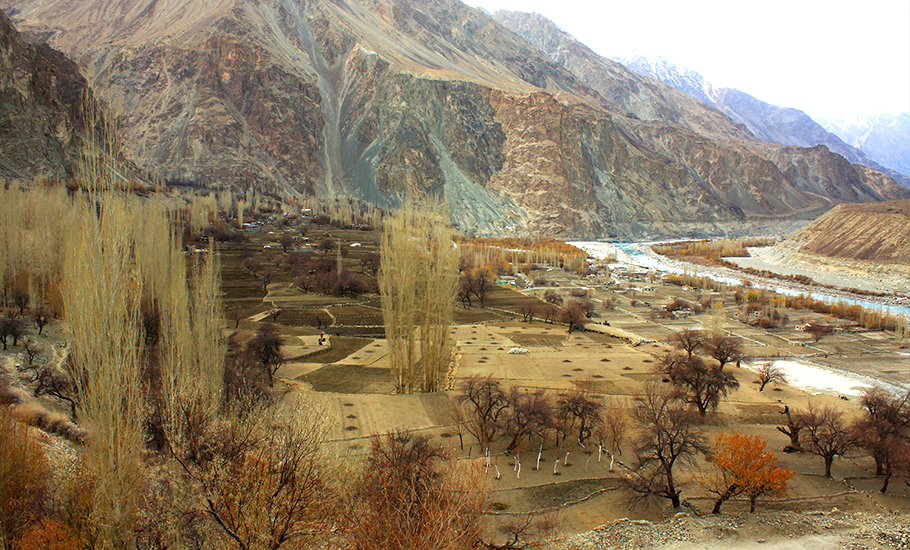
Seizing the opportunity, Chuli and Yangdrung plotted a plan to capture the fort. They waited for the king to return from the match and on the first sight shot a fatal arrow that pierced the ruler, killing him instantly. The two Turks anointed themselves as the rulers of the fort. The fort and the area around it came to be called ‘Turtuk’. Today, barely recognisable bastions of the fort remain though polo continues to be an inseparable part of Turtuk.
With practically no documented history of the area, it is difficult to attest the veracity of this legend but it surely makes for a tale as enthralling as the game itself.

